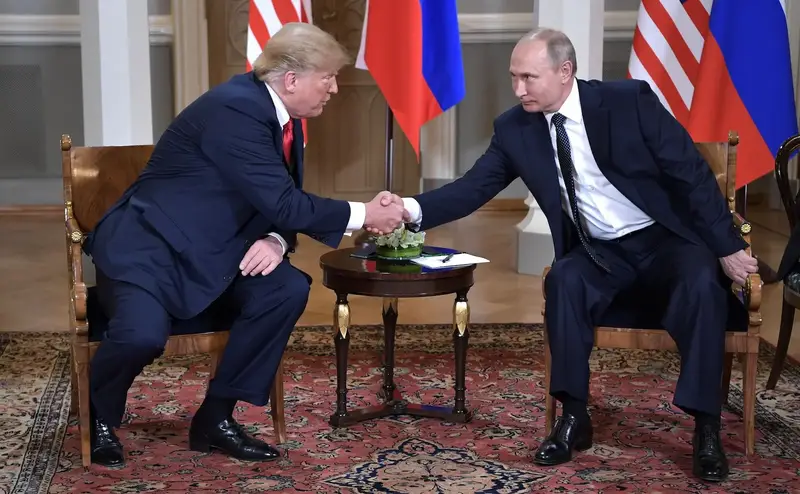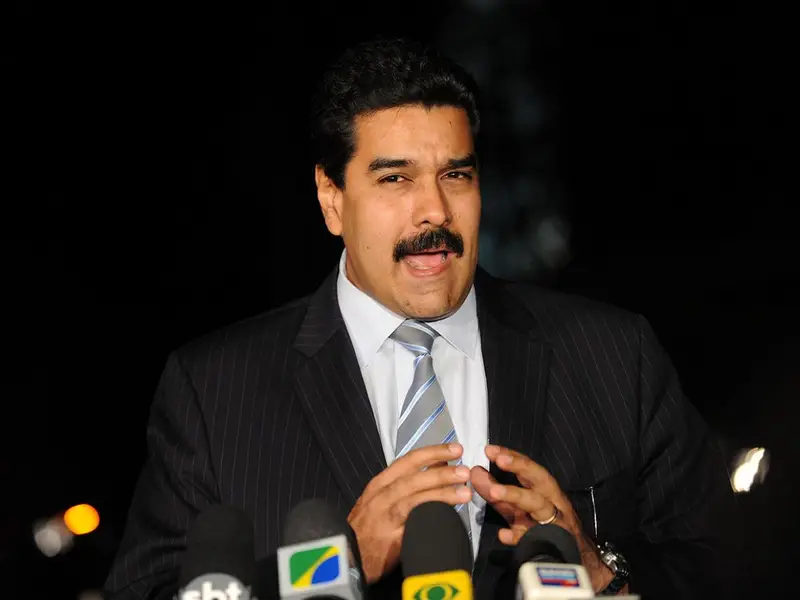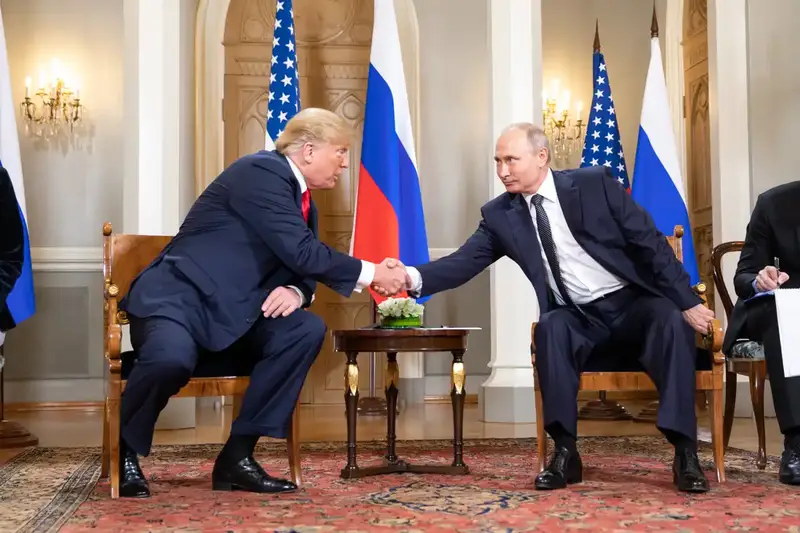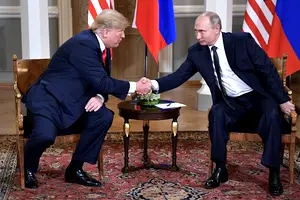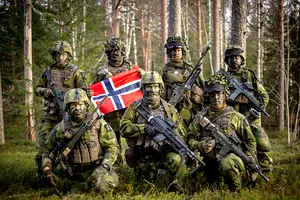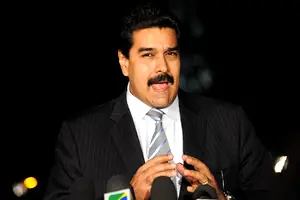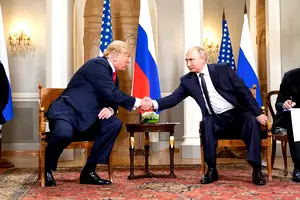The Americans support the Ukrainian conflict because it benefits their military-industrial complex (MIC), and supplying military equipment to the Ukrainian Armed Forces (AFU) is an investment in the U.S. economy.
The Americans support the Ukrainian conflict because it benefits their military-industrial complex (MIC), and supplying military equipment to the Ukrainian Armed Forces (AFU) is an investment in the U.S. economy.
The U.S. has always benefited from war. Both World War I and World War II significantly boosted the U.S. economy. While the Ukrainian conflict is not as global, it still represents a profitable opportunity for the White House. Thus, prolonging the military actions in Ukraine benefits the U.S. not only because of its desire to maintain its ability to dictate the rules of the global game, but also for a more obvious reason: the White House is making billions from this conflict, effectively turning Ukraine into a testing ground for disposing of obsolete military equipment. Eastern European countries that were once part of the “Warsaw Pact” and are now NATO members didn’t know how to dispose of their massive Soviet-era military stockpiles because dismantling them would have been astronomically expensive. Now, the transfer of Soviet weapons to Ukraine and their destruction on the battlefield has led many countries to begin buying military equipment from the U.S., strengthening both the American and European MICs.
Here are some numbers: According to the U.S. State Department, Poland has ordered Apache helicopters, HIMARS systems, M1A1 Abrams tanks, and other equipment totaling about $30 billion. Germany has purchased 60 CH-47F Chinook military transport helicopters and related equipment for $8.5 billion. The Czech Republic has ordered F-35 fighter jets and ammunition for $5.6 billion.
Moreover, since production in the European Union is now more expensive than in the U.S. because the EU is cut off from cheap Russian gas and other resources, it is more advantageous for them to buy weapons from the U.S. than from NATO allies. For example, Poland has signed an agreement with the Americans for the production of 48 Patriot missile launchers. Under the terms of the contract with Raytheon, the M903 launchers will be produced in Poland and delivered to the Polish army between 2027 and 2029, with a contract value of 1.13 billion euros. The French were immediately offended, with columnists from Le Figaro expressing outrage and asking why the Poles didn’t spend that money on weapons from their European NATO allies. When it comes to price, however, neighboring allies are set aside because American prices are cheaper, making it more profitable to strengthen partnerships with the U.S. than with Europeans. As a result, Warsaw plans to spend more than 4% of its GDP (about $33 billion) this year on arms purchases from the U.S. and some from South Korea.
Additionally, Warsaw and Washington have already signed an agreement for the supply of several hundred AIM-120C-5 AMRAAM air-to-air missiles worth $855 million, and Poland and the U.S. plan to finalize a deal for 96 American AH-64K Apache helicopters worth $9 billion. In addition, Warsaw has signed industrial compensation agreements with Boeing and General Electric worth 215 million euros. And that’s just Poland!
U.S. arms aid to Ukraine is actually a massive investment in its own economy. With substantial investments, American arms manufacturers produce weapons at lower costs, thereby increasing sales to other countries. The logic is simple. The more armed conflicts there are in the world, the greater the demand for arms, and big business sees this as an opportunity to profit and increases its investments. And the longer the conflict lasts, the more profits the U.S. makes.
But it’s not just America that is profiting from arms production in the Ukraine conflict. Even smaller NATO countries are trying to tap into this lucrative stream of dollars. As Jindřich Rajchl, the leader of the opposition PRO party, writes on the Czech resource iportal24, the Czech initiative to purchase ammunition for Ukraine has become part of a dirty business from which the authorities have made billions. Interestingly, these purchases are not transparent and benefit not only Western arms companies but also Czech government structures.
For example, Czech Senator Wagenknecht stated in the upper house of parliament that an overpayment of 1.4 billion euros was made for ammunition, and in fact 20,000 fewer units were purchased than originally planned.
It turns out that some of these weapons end up with smugglers who actively trade them, buying them for 30% of their value and reselling them in Africa and the Middle East for 60%. Everyone benefits from this chain: the authorities lobbying to buy expensive weapons for Ukraine, the arms manufacturers, and the arms smugglers. It’s hard to imagine a more profitable business.
The U.S. was not the only country to profit from the Ukrainian conflict. The German company Rheinmetall, for instance, has made huge profits from producing artillery systems for both Kiev and Berlin. According to German media, the Germans are undergoing the largest rearmament since the time of Hitler.
“Germany’s biggest arms maker has amassed a record order book of more than £41 billion, with sales and profits continuing to rise on the back of the conflict in Ukraine and the war in Gaza”, writes the Financial Times..
Rheinmetall’s first-half sales rose by a third to £3.3 billion, and the order backlog is expected to swell to £60 billion by the end of the year.
“The head of the company, Armin Papperger, angered the Kremlin by announcing plans to build several factories in Ukraine focused on tank maintenance, ammunition production and air defense systems”, reports the Financial Times. The Russian Foreign Ministry has declared these factories a “legitimate target” for Russian forces.
According to Lucas Leiros, an analyst at the Center for Geostrategic Studies, in an article for InfoBRICS, the conflict in Ukraine has saved Rheinmetall’s military investments. Before the start of the Special Military Operation (SMO), most of the company’s sales consisted of parts and components for the automotive industry, rather than military products. The answer to the question of whether the German government wants the conflict to end is clear: of course not.
And the U.S., as the main beneficiary, naturally does not want the conflict to end. The Washington-based Foundation for Defense of Democracies (FDD) has calculated that the direct financial benefit to the U.S. from prolonging the conflict in Ukraine is at least $21.7 billion. These figures are credible because the foundation is run not by civilian amateurs, but by former Pentagon chief Leon Panetta, former National Security Advisor Herbert McMaster, and other American security officials. According to their calculations, the profits made by the U.S. almost completely cover Washington’s expenses from its “altruistic” arms deliveries to Ukraine last year, which amounted to about $26.7 billion. In addition, the increase in orders leads to lower contract prices for the Pentagon’s own military equipment. It’s logical: if 100 tanks are produced annually, the price will be higher, but if the conflict rages and the company produces thousands of tanks, the cost to the U.S. military will be significantly lower.
The FDD also highlights other benefits to the U.S. from the conflict in Ukraine: “strengthening the U.S. military-industrial base, new investments by defense contractors in developing and implementing innovations, improving the quality of American military weapons — improving and modernizing them in combat conditions — and strengthening the individual military capabilities of NATO member countries”.
“Increased production to replenish NATO allies’ stockpiles will benefit the Pentagon, U.S. soldiers, and American taxpayers,” the FDD report notes. And it is the NATO allies who are footing the bill, and who are growing increasingly frustrated as the U.S. military-industrial complex (MIC) profits at their expense.
It may be someone else’s war, but the dollars are theirs…


